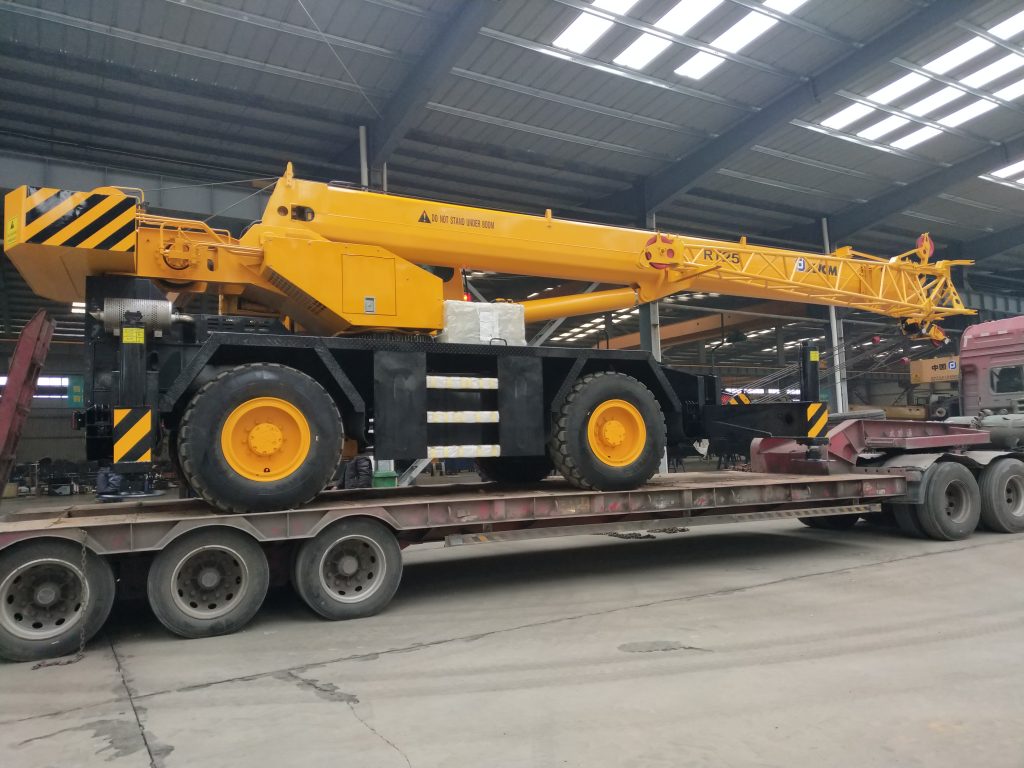Hydraulic cranes are widely used in construction, manufacturing, and transportation industries due to their ability to lift heavy loads. They use hydraulic power to move the load and are available in various sizes and configurations.Hydraulic Crane.
This article will discuss the latest trends and innovations in hydraulic crane technology.
What Is A Hydraulic Crane? How Does A Hydraulic Crane Work?
A hydraulic crane is a type of crane that uses hydraulic power to lift and move heavy objects. It consists of a hydraulic system, a boom, and a counterweight.
They are commonly used in various industries to lift and move heavy loads. They work on the principle of hydraulic power and consist of several components that work together to accomplish the task.
Hydraulic System:
The hydraulic system of a crane is responsible for providing power to move the crane. It consists of a pump, hoses, and cylinders that work together to create pressure.
When the pump is turned on, it forces oil through the hoses and into the cylinders, creating pressure that can be used to move the crane.
Boom:
The boom is a long arm that extends from the crane and is used to lift and move the load. It can be adjusted to different lengths and angles to reach the desired position.
The boom is operated by hydraulic cylinders, which extend and retract the sections of the boom.
Counterweight:
The counterweight is located at the back of the crane and is used to balance the load. It prevents the crane from tipping over when lifting heavy loads.
The counterweight can be adjusted to different sizes and positions depending on the weight of the load and the angle of the boom.
Control System:
The control system of a hydraulic crane is used to operate the crane. It consists of levers, pedals, and buttons that control the movement of the crane.
The operator uses the controls to move the boom up and down, extend and retract the boom sections, and move the crane to the desired position.
Hydraulic cranes are powerful machines that are used to lift and move heavy loads. They work on the principle of hydraulic power and consist of several components that work together to accomplish the task. Understanding how hydraulic cranes work is essential for safe and efficient operation.
The Benefits Of Using Hydraulic Cranes With Hybrid Engines:
Hydraulic cranes are widely used in various industries, including construction, manufacturing, and transportation. As environmental concerns continue to rise, many companies are looking for ways to reduce their carbon footprint and improve fuel efficiency. One solution to this problem is the use of hybrid engines in hydraulic cranes.
Improved Fuel Efficiency:
Hydraulic cranes with hybrid engines offer improved fuel efficiency compared to traditional hydraulic cranes. Hybrid engines combine the use of a traditional diesel engine with an electric motor.
This combination results in reduced fuel consumption and lower emissions. The electric motor assists the diesel engine during operation, allowing it to work at a lower power level and consume less fuel.
Reduced Operating Costs:
Hydraulic cranes with hybrid engines also offer reduced operating costs. As they consume less fuel, they require fewer refueling stops, resulting in lower fuel costs.
Additionally, they require less maintenance due to the lower workload on the diesel engine. This results in lower maintenance costs and longer machine life.
Lower Emissions:
Hydraulic cranes with hybrid engines emit fewer harmful gases into the environment. This is because the electric motor assists the diesel engine during operation, reducing the amount of fuel needed to power the crane. This, in turn, results in lower emissions of carbon dioxide and other harmful pollutants.
Remote-Controlled Hydraulic Cranes: The Latest Advancements In Hydraulic Crane Technology
Remote-controlled hydraulic cranes are the latest advancement in hydraulic crane technology. They allow operators to control the crane from a safe distance, reducing the risk of accidents and improving productivity.
Remote-controlled cranes are equipped with sensors and cameras, which provide real-time feedback to the operator. This allows them to make more accurate and precise movements, improving the overall efficiency of the crane.
Remote-controlled hydraulic cranes are particularly useful in hazardous or hard-to-reach areas.
Advanced Safety Features: The Latest Safety Features In Hydraulic Cranes
Hydraulic cranes are powerful machines that can be dangerous if not operated correctly. To improve safety, manufacturers are incorporating advanced safety features into hydraulic cranes.
One example is anti-collision systems, which use sensors to detect nearby obstacles and prevent collisions. Another feature is automatic overload protection, which prevents the crane from lifting more weight than it can handle.
Safe and reliable choice: XJCM’s 80-ton mobile crane

XJCM’s 80-ton mobile crane has several safety features, including torque limiters, swing table lock devices, outrigger lock devices, and emergency steering power devices. These safety features help prevent accidents and protect workers on the job.
Off-Road Performance And Mobility: Key Factors In Hydraulic Crane Design
Off-road performance and mobility are key factors in hydraulic crane design. Many construction sites are located in remote or challenging terrain, making it essential for hydraulic cranes to be able to travel off-road.
XJCM’s 80-ton mobile crane features front-wheel steering, four-wheel steering, and crab steering, making it suitable for off-road travel. It also has an all-wheel drive and rear axle steering lock, which provides better traction and control on uneven surfaces.
Additionally, the crane’s brake system uses American Mico brand technology, which is known for its durability and reliability.
Final words:
Hydraulic cranes are an essential tool in many industries, and their technology is constantly evolving to meet the demands of the modern workplace.
Hybrid engines, remote-controlled operation, advanced safety features, and off-road performance are just a few of the latest trends and innovations in hydraulic crane technology.
As technology continues to advance, we can expect to see even more improvements in the design and operation of hydraulic cranes.


